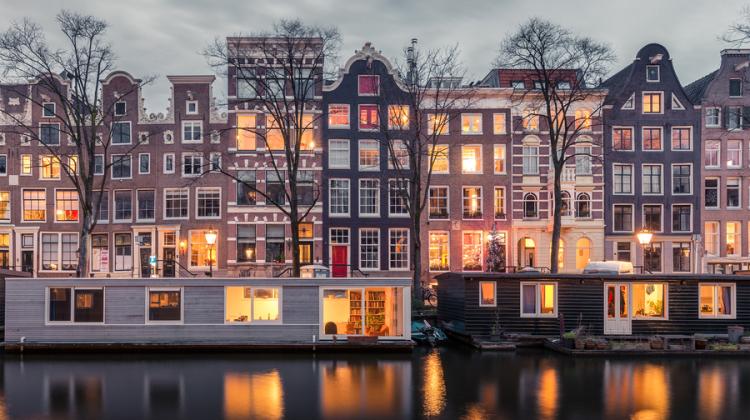Study shows how households can cut energy costs

Giving people better data about their energy use, plus some coaching, can help them substantially reduce their consumption and costs, according to a study by MIT researchers in Amsterdam. Credit: iStock
An experiment in Amsterdam suggests providing better information to people can help move them out of “energy poverty.”
Peter Dizikes | MIT News
Many people around the globe are living in energy poverty, meaning they spend at least 8 percent of their annual household income on energy. Addressing this problem is not simple, but an experiment by MIT researchers shows that giving people better data about their energy use, plus some coaching on the subject, can lead them to substantially reduce their consumption and costs.
The experiment, based in Amsterdam, resulted in households cutting their energy expenses in half, on aggregate — a savings big enough to move three-quarters of them out of energy poverty.
“Our energy coaching project as a whole showed a 75 percent success rate at alleviating energy poverty,” says Joseph Llewellyn, a researcher with MIT’s Senseable City Lab and co-author of a newly published paper detailing the experiment’s results.
“Energy poverty afflicts families all over the world. With empirical evidence on which policies work, governments could focus their efforts more effectively,” says Fábio Duarte, associate director of MIT’s Senseable City Lab, and another co-author of the paper.
The paper, “Assessing the impact of energy coaching with smart technology interventions to alleviate energy poverty,” appears today in Nature Scientific Reports.
The authors are Llewellyn, who is also a researcher at the Amsterdam Institute for Advanced Metropolitan Solutions (AMS) and the KTH Royal Institute of Technology in Stockholm; Titus Venverloo, a research fellow at the MIT Senseable City Lab and AMS; Fábio Duarte, who is also a principal researcher MIT’s Senseable City Lab; Carlo Ratti, director of the Senseable City Lab; Cecilia Katzeff; Fredrik Johansson; and Daniel Pargman of the KTH Royal Institute of Technology.
The researchers developed the study after engaging with city officials in Amsterdam. In the Netherlands, about 550,000 households, or 7 percent of the population, are considered to be in energy poverty; in the European Union, that figure is about 50 million. In the U.S., separate research has shown that about three in 10 households report trouble paying energy bills.
To conduct the experiment, the researchers ran two versions of an energy coaching intervention. In one version, 67 households received one report on their energy usage, along with coaching about how to increase energy efficiency. In the other version, 50 households received those things as well as a smart device giving them real-time updates on their energy consumption. (All households also received some modest energy-savings improvements at the outset, such as additional insulation.)
Across the two groups, homes typically reduced monthly consumption of electricity by 33 percent and gas by 42 percent. They lowered their bills by 53 percent, on aggregate, and the percentage of income they spent on energy dropped from 10.1 percent to 5.3 percent.
What were these households doing differently? Some of the biggest behavioral changes included things such as only heating rooms that were in use and unplugging devices not being used. Both of those changes save energy, but their benefits were not always understood by residents before they received energy coaching.
“The range of energy literacy was quite wide from one home to the next,” Llewellyn says. “And when I went somewhere as an energy coach, it was never to moralize about energy use. I never said, ‘Oh, you’re using way too much.’ It was always working on it with the households, depending on what people need for their homes.”
Intriguingly, the homes receiving the small devices that displayed real-time energy data only tended to use them for three or four weeks following a coaching visit. After that, people seemed to lose interest in very frequent monitoring of their energy use. And yet, a few weeks of consulting the devices tended to be long enough to get people to change their habits in a lasting way.
“Our research shows that smart devices need to be accompanied by a close understanding of what drives families to change their behaviors,” Venverloo says.
As the researchers acknowledge, working with consumers to reduce their energy consumption is just one way to help people escape energy poverty. Other “structural” factors that can help include lower energy prices and more energy-efficient buildings.
On the latter note, the current paper has given rise to a new experiment Llewellyn is developing with Amsterdam officials, to examine the benefits of retrofitting residental buildings to lower energy costs. In that case, local policymakers are trying to work out how to fund the retrofitting in such a way that landlords do not simply pass those costs on to tenants.
“We don’t want a household to save money on their energy bills if it also means the rent increases, because then we’ve just displaced expenses from one item to another,” Llewellyn says.
Households can also invest in products like better insulation themselves, for windows or heating components, although for low-income households, finding the money to pay for such things may not be trivial. That is especially the case, Llewellyn suggests, because energy costs can seem “invisible,” and a lower priority, than feeding and clothing a family.
“It’s a big upfront cost for a household that does not have 100 Euros to spend,” Llewellyn says. Compared to paying for other necessities, he notes, “Energy is often the thing that tends to fall last on their list. Energy is always going to be this invisible thing that hides behind the walls, and it’s not easy to change that.”


